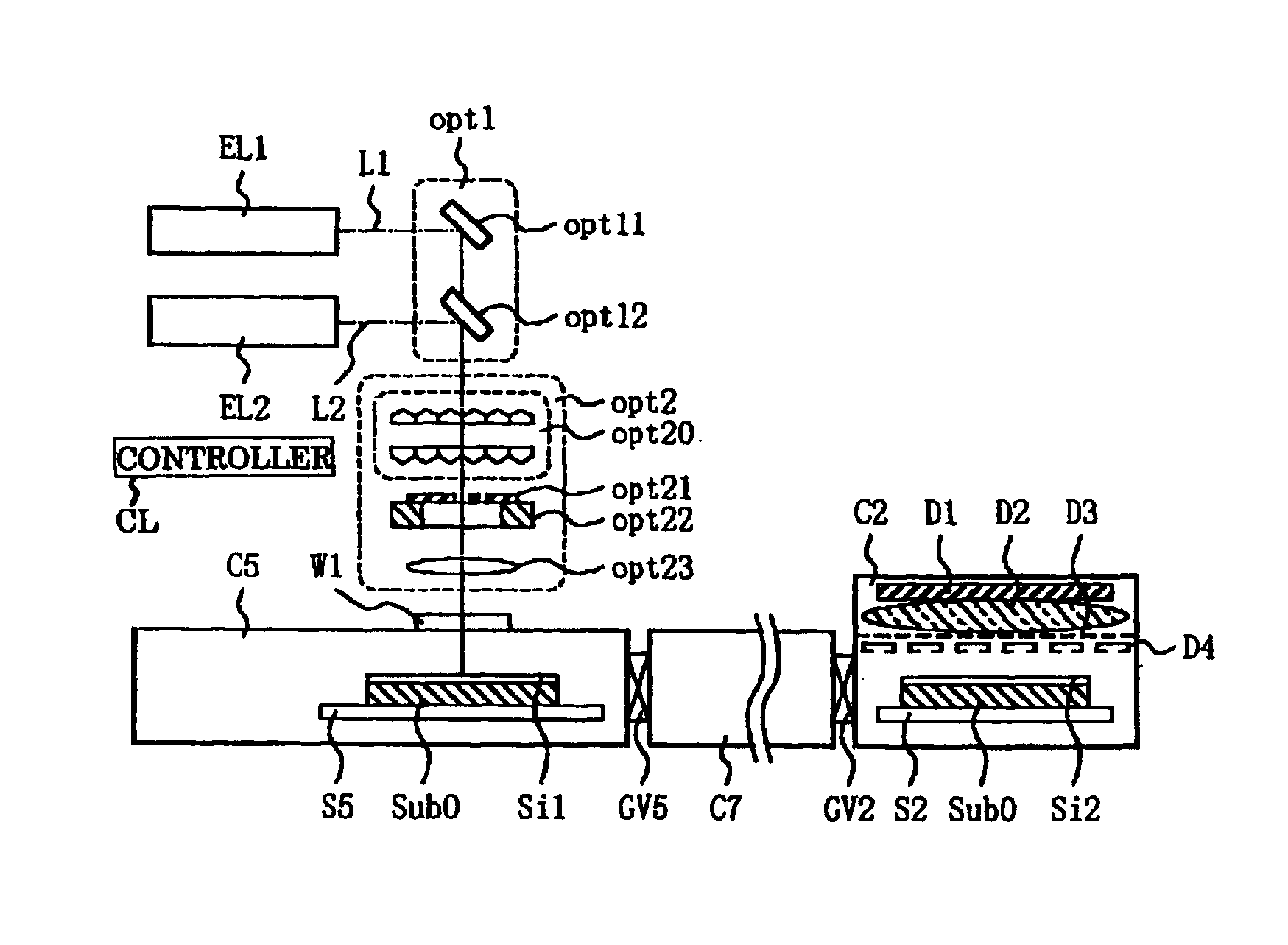Apparatus for fabricating thin-film semiconductor device
a thin-film semiconductor and apparatus technology, applied in semiconductor devices, chemical vapor deposition coatings, coatings, etc., can solve the problems of contaminant adhesion to the surface, degradation of the performance of resultant tft, and difficulty in keeping a chamber located at the core, so as to prevent contaminants and reduce the concentration of contaminants
- Summary
- Abstract
- Description
- Claims
- Application Information
AI Technical Summary
Benefits of technology
Problems solved by technology
Method used
Image
Examples
Embodiment Construction
, in which like reference characters designate the same or similar parts throughout the drawings.
BRIEF DESCRIPTION OF THE DRAWINGS
[0081]FIG. 1A is a timing chart of processing a substrate in a method in accordance with the embodiment of the present invention.
[0082]FIG. 1B is another timing chart of processing a substrate in a method in accordance with the embodiment of the present invention.
[0083]FIG. 2 is a flow-chart of processing a substrate in a method in accordance with the embodiment of the present invention.
[0084]FIG. 3 is another flow-chart of processing a substrate in a method in accordance with the embodiment of the present invention.
[0085]FIG. 4 is a cross-sectional view of an apparatus of forming a thin-film semiconductor device in accordance with the embodiment of the present invention.
[0086]FIG. 5 is a cross-sectional view of another apparatus of forming a thin-film semiconductor device in accordance with the embodiment of the present invention.
[0087]FIG. 6 is a top vi...
PUM
| Property | Measurement | Unit |
|---|---|---|
| temperature | aaaaa | aaaaa |
| temperature | aaaaa | aaaaa |
| boiling point | aaaaa | aaaaa |
Abstract
Description
Claims
Application Information
 Login to View More
Login to View More - R&D
- Intellectual Property
- Life Sciences
- Materials
- Tech Scout
- Unparalleled Data Quality
- Higher Quality Content
- 60% Fewer Hallucinations
Browse by: Latest US Patents, China's latest patents, Technical Efficacy Thesaurus, Application Domain, Technology Topic, Popular Technical Reports.
© 2025 PatSnap. All rights reserved.Legal|Privacy policy|Modern Slavery Act Transparency Statement|Sitemap|About US| Contact US: help@patsnap.com



